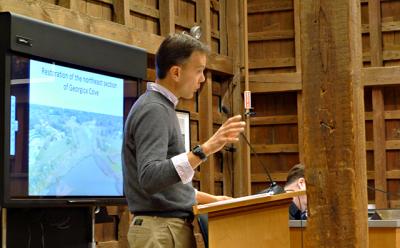Real Estate Agents Are Go-Betweens
Real Estate Agents Are Go-Betweens
While the weather may still be wintry, and we are only on the second page of the 2016 calendar, it is about this time that real estate agents begin the process of matching up landlords and tenants for summer rentals.
This year, local agencies have the additional task of informing their homeowning clients about East Hampton Town’s new rental registry law, which requires everyone offering a house for rent to obtain a registration number from the town, under penalty of stiff fines or even imprisonment.
To do so, an application must be submitted to the town’s Building Department, providing information about the proposed rental, such as the number of legal bedrooms. An affidavit attesting that the property meets certain building and safety codes must also be filed. A $100 fee is charged for a registry number good for two years.
The town board passed the new law in December and has given prospective landlords until May 1 to comply.
According to Ann Glennon, who, as the town’s chief building inspector, is in charge of the registry, 179 rental registration numbers had been issued as of Tuesday and about 50 applications were pending. The Building Department, she said, has generally been able to process applications and provide landlords with the required registration numbers within two or three days.
For-rent ads, including postings online, must include the rental registry number, or homeowners will be subject to a fine. Numbers must be obtained for all rental properties, even if they are already leased, and information on tenants and leases must be provided. Under the law, an update must be filed with the town if a tenant or lease term changes.
“I think the word is getting out there,” Ms. Glennon said on Tuesday. Many applications have been mailed in, she said, though some people have submitted them in person.
“It’s going pretty well,” she said. “People don’t really seem to be having a problem with it.”
So far, she said, her department has easily assimilated the additional workload, processing about 10 applications a day. “As of right now, it hasn’t been a killer for us,” she said — though what happens as spring nears and more homeowners think about renting for the summer remains to be seen.
To inform its clients, Saunders & Associates brokerage has created a short video, which has been posted on YouTube. After reviewing the tenets of the law, it poses the question, in infographic form, “Are there legal issues with the law?”
“While we see potential legal issues, landlords must consult with their own counsel on the ramifications and potential issues with the law,” is the answer.
Opponents of the rental registry, who spoke at several public hearings before the law was passed, had contended that the requirements of the registry overstepped the town’s authority, running afoul of civil rights and property rights.
Another real estate agency, Brown Harris Stevens of the Hamptons, has sent notices to all the landlords it represents in East Hampton, explaining the requirements of the law and informing them that after May 1 “non-complying landlords will be at risk for fines and criminal sanctions.” The company provided a link to the town’s website, where registration forms can be downloaded.
“We haven’t had really any negative response to it, although it may still be too early to tell,” Cia Comnas, a manager at the brokerage, said this week. Questions had come in from a few clients, she said.
Egan & Golden, a law firm with offices in East Hampton and in Patchogue, also wrote up a “frequently asked questions” guide to the new law for East Hampton landlords and posted it on its website, noting that its attorneys “are fully familiar with Building Department regulations” and are “available to draft and review all rental property documents” to ensure compliance with the town code.
The registry law has also attracted attention from the Real Estate Weekly website, which noted the attendance of local real estate brokers “en masse” at a town-sponsored information session. According to that website, East Hampton is the eighth town in Suffolk County to enact a rental registry law or permit requirement.




